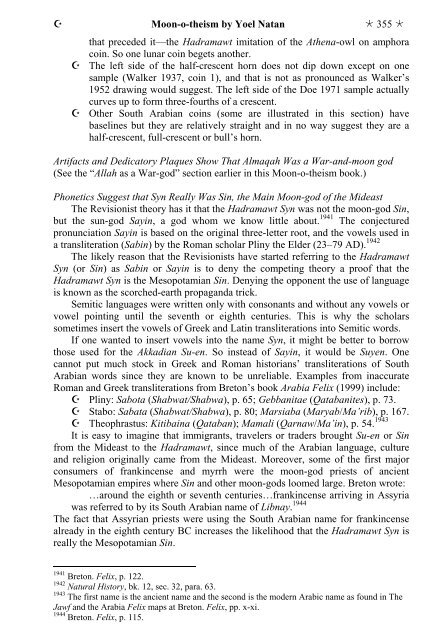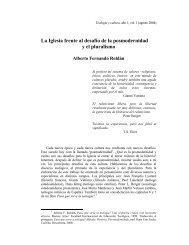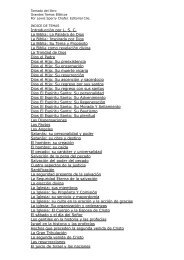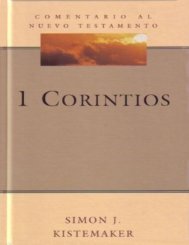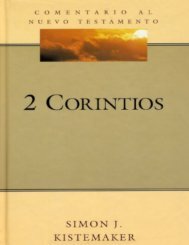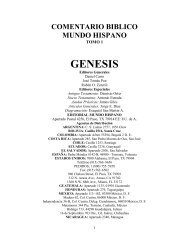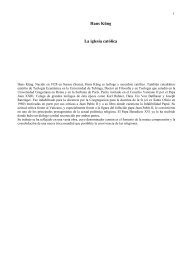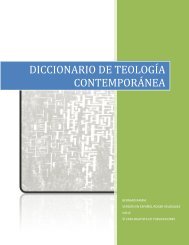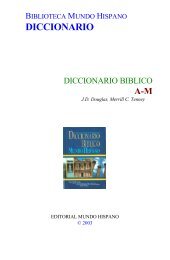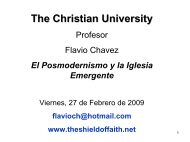Moon-o-theism: Religion of a War- and Moon-god Prophet
Moon-o-theism: Religion of a War- and Moon-god Prophet
Moon-o-theism: Religion of a War- and Moon-god Prophet
- No tags were found...
Create successful ePaper yourself
Turn your PDF publications into a flip-book with our unique Google optimized e-Paper software.
<strong>Moon</strong>-o-<strong>theism</strong> by Yoel Natan 355 that preceded it—the Hadramawt imitation <strong>of</strong> the Athena-owl on amphoracoin. So one lunar coin begets another. The left side <strong>of</strong> the half-crescent horn does not dip down except on onesample (Walker 1937, coin 1), <strong>and</strong> that is not as pronounced as Walker’s1952 drawing would suggest. The left side <strong>of</strong> the Doe 1971 sample actuallycurves up to form three-fourths <strong>of</strong> a crescent. Other South Arabian coins (some are illustrated in this section) havebaselines but they are relatively straight <strong>and</strong> in no way suggest they are ahalf-crescent, full-crescent or bull’s horn.Artifacts <strong>and</strong> Dedicatory Plaques Show That Almaqah Was a <strong>War</strong>-<strong>and</strong>-moon <strong>god</strong>(See the “Allah as a <strong>War</strong>-<strong>god</strong>” section earlier in this <strong>Moon</strong>-o-<strong>theism</strong> book.)Phonetics Suggest that Syn Really Was Sin, the Main <strong>Moon</strong>-<strong>god</strong> <strong>of</strong> the MideastThe Revisionist theory has it that the Hadramawt Syn was not the moon-<strong>god</strong> Sin,but the sun-<strong>god</strong> Sayin, a <strong>god</strong> whom we know little about. 1941 The conjecturedpronunciation Sayin is based on the original three-letter root, <strong>and</strong> the vowels used ina transliteration (Sabin) by the Roman scholar Pliny the Elder (23–79 AD). 1942The likely reason that the Revisionists have started referring to the HadramawtSyn (or Sin) as Sabin or Sayin is to deny the competing theory a pro<strong>of</strong> that theHadramawt Syn is the Mesopotamian Sin. Denying the opponent the use <strong>of</strong> languageis known as the scorched-earth propag<strong>and</strong>a trick.Semitic languages were written only with consonants <strong>and</strong> without any vowels orvowel pointing until the seventh or eighth centuries. This is why the scholarssometimes insert the vowels <strong>of</strong> Greek <strong>and</strong> Latin transliterations into Semitic words.If one wanted to insert vowels into the name Syn, it might be better to borrowthose used for the Akkadian Su-en. So instead <strong>of</strong> Sayin, it would be Suyen. Onecannot put much stock in Greek <strong>and</strong> Roman historians’ transliterations <strong>of</strong> SouthArabian words since they are known to be unreliable. Examples from inaccurateRoman <strong>and</strong> Greek transliterations from Breton’s book Arabia Felix (1999) include: Pliny: Sabota (Shabwat/Shabwa), p. 65; Gebbanitae (Qatabanites), p. 73. Stabo: Sabata (Shabwat/Shabwa), p. 80; Marsiaba (Maryab/Ma’rib), p. 167. Theophrastus: Kitibaina (Qataban); Mamali (Qarnaw/Ma’in), p. 54. 1943It is easy to imagine that immigrants, travelers or traders brought Su-en or Sinfrom the Mideast to the Hadramawt, since much <strong>of</strong> the Arabian language, culture<strong>and</strong> religion originally came from the Mideast. Moreover, some <strong>of</strong> the first majorconsumers <strong>of</strong> frankincense <strong>and</strong> myrrh were the moon-<strong>god</strong> priests <strong>of</strong> ancientMesopotamian empires where Sin <strong>and</strong> other moon-<strong>god</strong>s loomed large. Breton wrote:…around the eighth or seventh centuries…frankincense arriving in Assyriawas referred to by its South Arabian name <strong>of</strong> Libnay. 1944The fact that Assyrian priests were using the South Arabian name for frankincensealready in the eighth century BC increases the likelihood that the Hadramawt Syn isreally the Mesopotamian Sin.1941 Breton. Felix, p. 122.1942 Natural History, bk. 12, sec. 32, para. 63.1943 The first name is the ancient name <strong>and</strong> the second is the modern Arabic name as found in TheJawf <strong>and</strong> the Arabia Felix maps at Breton. Felix, pp. x-xi.1944 Breton. Felix, p. 115.


